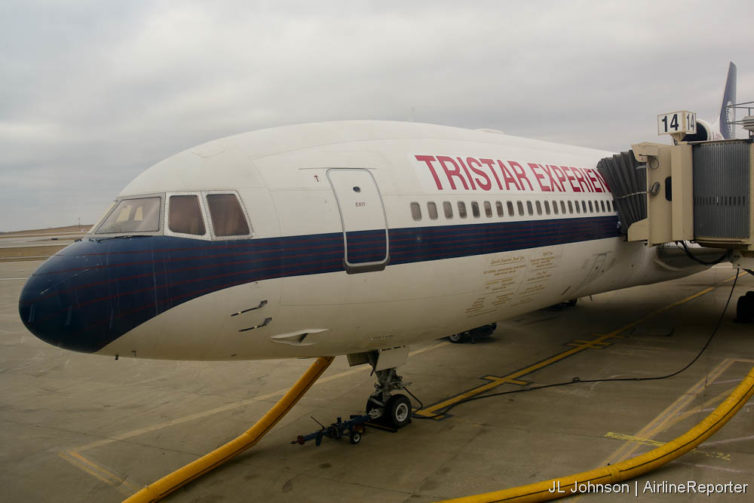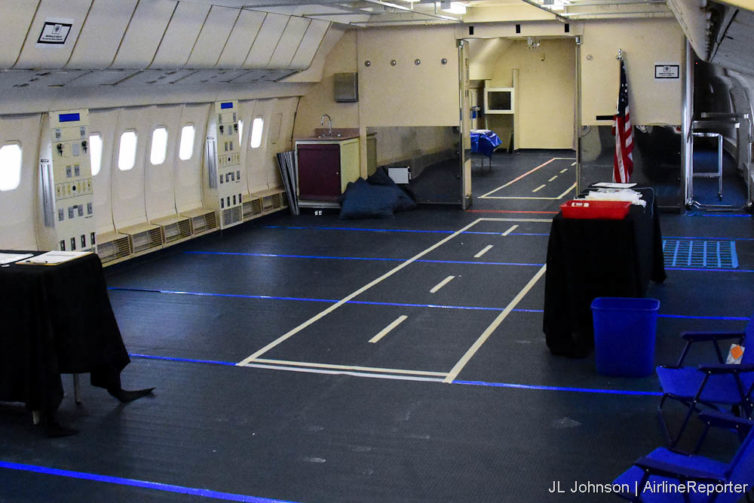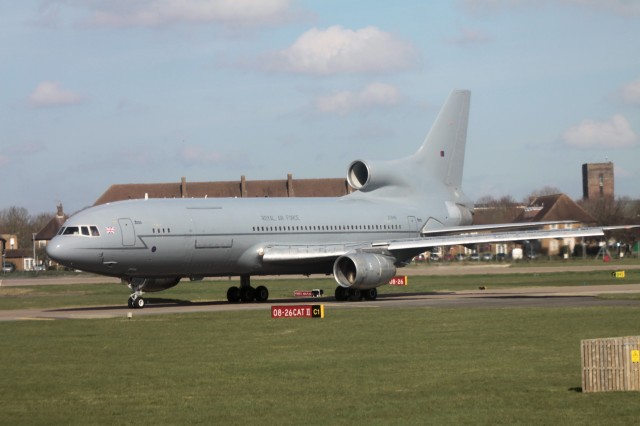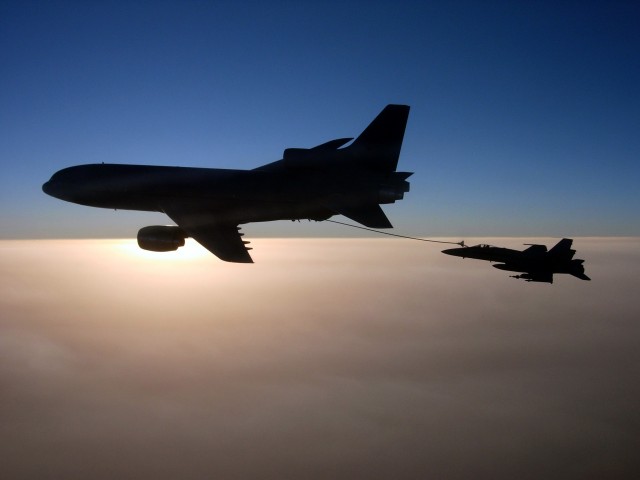
The TriStar Experience L-1011. A STEM experience like no other awaits.
8:30 AM, it’s a frigid spring morning. Three yellow school buses pull up to the curb of Kansas City International Airport’s Terminal A. This isn’t a rare sight; local schools often send sport and academic teams on trips to compete. But this day is different. The buses, filled to capacity with girls age 10-13, come to a stop outside a shuttered airport terminal which for years has not seen passenger traffic. These young minds would indeed be boarding a plane for a multi-hour experience, but the goal was not to travel. Instead, today’s visit to the airport is to learn about STEM (science, technology, engineering, and math) through hands-on experiences aboard an ultra-rare, airworthy L-1011 wide-body aircraft.
RELATED: THE RARE LOCKHEED L-1011 TRISTAR RETURNS TO THE SKIES ONCE MORE
The plane, which last served as a mobile hospital, arrived in Kansas City, MO last year thanks to TriStar Experience, a local non-profit. The organization seeks out rare planes, with the goal of inspiring the next generation to seek STEM and aviation careers. Readers may recall this is the same organization which rescued and restored TWA’s Wings of Pride plane which is currently on display in partnership with the TWA Museum at the Downtown Kansas City Airport.

Inside the airplane-hospital turned STEM lab. Amazingly roomy!
RELATED: TWA WINGS OF PRIDE PAINT BAY TIME-LAPSE AND TRISTAR UPDATES

Lockheed L1011 Tristar, KC 1; ZD950; callsign ’œFAGIN 12’. Backtracking along the main runway, alongside ZD948 ’œFAGIN 11’ – Photo: Graham Dinsdale
This story was written by Graham Dinsdale, of Ian Allan Aviation Tours in England, for AirlineReporter…
04:00 GMT (Greenwich Mean Time); my bedside alarm clock shatters the silence and causes my wife to stir; at last, I thought, keen to get started on what promised to be an awesome – but very sad – day. I had dozed the night away, my brain too active to shut down and allow me to get any sleep. I had reasons for my lack of sleep – I was to fly on a Royal Air Force (RAF) Lockheed L1011 Tristar in formation!
After the usual morning routine I was out the door by 4:30 a.m., and starting my car for the two-and-a-half hour drive across the countryside of Cambridgeshire, Northamptonshire, and Oxfordshire to the RAF’s huge air transport base at RAF Brize Norton. I anticipated possible delays due to dense fog and mist covering most of the route, and the morning rush-hour road traffic around the university town of Oxford didn’t help, so I allowed plenty of time to get to the rendezvous point: an off-base car park a quarter of a mile from the station’s main gate.
For those not familiar with British nomenclature, the RAF have ’œstations’ not ’œair bases!’ The fog and road traffic was not as bad as the internet advised, so I arrive early, at 6:25. Time to open up the flask of coffee and munch a biscuit. Over the next 90 minutes more and more of the invited media, and some very lucky aviation enthusiasts, arrived.

The twilight of the L1011 – refueling US Navy aircraft as part of Operation Enduring Freedom Photo: US Navy by Cmdr. Erik Etz
While 2014 may have been the end of commercial DC-10 services, many forget that the RAF (Royal Air Force) has been operating Lockheed L1011s (called “TriStars” in their parlance) as air-to-air refueling aircraft. Unfortunately for trijet enthusiasts, today marks the end of their service in the RAF. Even worse, they will be broken up in Bruntingthorpe.
As the resident Trijet Enthusiast – I was hoping for a little more notice from the RAF as to when the last RAF Tristar flight would happen. Thankfully, we have someone else who will be able to take the last flight and produce a fine report for AirlineReporter. As we await that final dispatch, let’s take a look back at the L1011 – an historical aircraft that even could have changed the pace of the Cold War.



